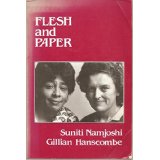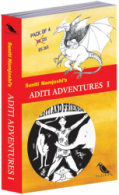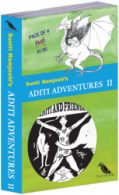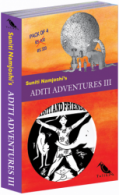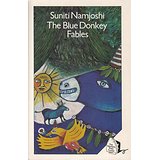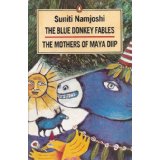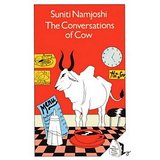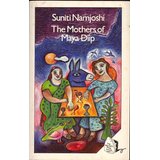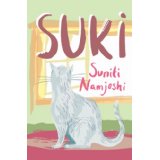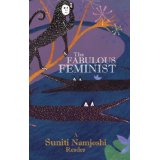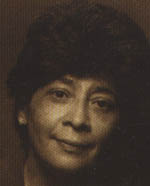
Suniti Namjoshi was born in Mumbai (Bombay), India and held various posts in the Indian civil service and academia prior to moving to Montreal. She earned a Ph.D. from McGill University in 1972 with a thesis on Ezra Pound. From 1972 until the mid 1990s she taught in the English Dept. of the University of Toronto. Since then, she relocated to the United Kingdom where she was a Research Fellow at the Centre for Women’s Studies at Exeter University. She now lives and writes in Devon, England. She is best known for her poetry, fables and children’s books.
Poetry
Because of India: Selected Poems and Fables
London: Onlywomen Press, 1989.
Poetry
Cyclone in Pakistan
Calcutta, India: Writers Workshop, 1971.
republished in 1986
Poetry
Flesh and Paper
Co-authored by Gillian Hanscombe.
Charlottetown, P.E.I.: Ragweed Press, 1986.
Poetry
From the Bedside of Nightmares
Fredericton, N.B.: Fiddlehead Poetry Books & Goose Lane Editions, 1984.
Poetry
More Poems
Calcutta, India: Writers Workshop, 1971.
Poetry
Poems
Calcutta, India: P. Lal, 1967.
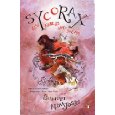
Poetry
Sycorax: New Fables and Poems
New Delhi, India: Penguin Books India, 2006.
Fiction (Juvenile)
Aditi Adventures I: Unlikely Friends
Pictures: Shefalee Jain.
Chennai, India: Tulika Books, 2007.
Contains four titles originally issued separately between 2004 and 2007.
Contents: Aditi and the Thames dragon — Aditi and the one-eyed monkey — Aditi and the techno sage — Aditi and the marine sage.
Publisher’s Synopsis (From its website)
In this first set of adventures, Aditi, Monkeyji, Siril the ant and Beautiful Ele the Beautiful Elephant make friends with the two dragons, Goldie and Opal, and are helped by The Three Sages and help them in turn. The challenges they face are not just a matter of fighting an enemy with whatever skill and ingenuity they have. They also have to think about various questions. . . What is the best way to deal with someone unreasonable who is stronger than you? What is the difference between a real dragon and an unreal dragon? Is solving a set of problems without actually fighting anyone also an adventure? What happens to someone who can remember what happened, but not the order in which it happened?
Fiction (Juvenile)
Aditi Adventures II: Unexpected Monsters
Pictures: Shefalee Jain.
Chennai, India: Tulika Books, 2007?.
Contains four titles originally issued separately.
Contents: Aditi and her friends help the Budapest Changeling — Aditi and her friends meet Grendel — Aditi and her friends in search of Shemeek — [one additional title].
Publisher’s Synopsis (From its website)
In this second set of adventures, Aditi and her friends encounter figures from various European myths and legends who behave in unexpected and sometimes alarming ways. The Sybil of Cumae turns out to be helpful. Grendel the monster is only a boy, who forgets every day what happened the day before. The Budapest Changeling changes in accordance with how she’s perceived. And the wise Shemeek has to help Monkeyji on whom a spell has been cast so that she’s unable to speak without telling a lie. . .
Fiction (Juvenile)
Aditi Adventures III: Heroes
Pictures: Proiti Roy.
Chennai, India: Tulika Books, 2007?.
Contains four titles originally issued separately.
Contents:
Publisher’s Synopsis (From its website)
In the third set of adventures, one or another of the friends is central and the others get embroiled. For example, Siril the ant falls in love or appears to fall in love, and they all find themselves setting off on a voyage to one of the moons of Jupiter. Or Beautiful Ele the Beautiful Elephant decides that she is going to turn into a rational elephant, but then finds that she and the others have to do some very peculiar things in order to help that most rational of creatures, Mistress i, who was born in a computer.
There’s also an adventure in which Monkeyji comes to the fore as she wields her mental powers with the skill and panache of a true hero. Gardy gets into difficulties when a distant relative asks him to help deal with a problem without realising that he is the problem, or at least a part of it. Questions arise. Is being rational always good? Are impossible friendships sometimes possible? If a word disappears, does that mean that for all practical purposes, the thing itself also disappears? What is seeing clearly about? – Guessing the future, seeing how things are or seeing how they should be? If you like to mix your admiration with an occasional smile, then these heroic deeds will entertain you.
Fiction (Fables)
The Blue Donkey Fables
London: The Women’s Press, 1988.
Fiction (Fables)
The Blue Donkey Fables ; The Mothers of Maya Diip
New Delhi, India: Penguin Books India, 1991, c1990.

Fiction
Building Babel
North Melbourne, Australia: Spinifex Press, 1996.
Connect to Spinifex Press website entry for the book where readers can add continuations to the last chapter:
Fiction
The Conversations of Cow
Illustrated by Sarah Baylis.
London: Women’s Press, 1985.

Fiction (Fable)
Feminist Fables
Drawings by Susan Trangmar.
London: Sheba Feminist Publishers, 1981.
North Melbourne, Australia: Spinifex Press, 1993.
London: Virago, 1994, c1981.
Fiction (Fables)
The Mothers of Maya Diip
London: The Women’s Press, 1989.

Fiction (Fable)
St Suniti and the Dragon
North Melbourne, Australia: Spinifex Press, 1999.

Non-fiction (Memoir)
Goja: An Autobiographical Myth
North Melbourne, Australia: Spinifex Press, 2000.
Summary (from the National Library of Australia web catalogue)
Suniti Namjoshi recaptures the impact of growing up in India and moving to the West. This powerful meditation, part autobiography, part elegy, deconstructs the glamour given to wealth and power, and celebrates the quest for love.
Non-fiction (Memoir)
Suki
New Delhi, India: Zubaan Books, 2014.
Publisher’s Synopsis (From its website)
In Suki, fabulist Suniti Namjoshi weaves a delightful tapestry from threads of longing, loss, memory, metaphor, and contemplation. The whole picture is a stunning evocation of the love and friendship shared between S and her Super Cat, Suki, a lilac Burmese. Suki suggests that she could be a goddess, and S her high priestess. S declines, but as they discuss the merits of vegetarianism, or the meaning of happiness, or morality, or just daily life, it soon becomes clear that the bond between them is a deep and complex one. The days of Suki’s life are figured as leaves, which fall vividly but irrevocably into time’s stream and are recollected with a wild tenderness by the grieving S, who learns through the disciplines of meditation how to lose what is most loved.
This beautiful narrative, both memoir and elegy, offers solace and celebration to everyone who has felt the trust that passes between a person and a beloved creature.
.
Anthology
The Fabulous Feminist: A Suniti Namjoshi Reader
New Delhi, India: Zubaan Books, 2013.
Publisher’s Synopsis
Selected Criticism and Interpretation
Arroyo, Ana Garcia. “Suniti Namjoshi’s Fancy and Facts: A Convergence of Indian and Western Influences.” In The Expatriate Indian Writing in English. Vol. 1, ed. T. Vinoda and P. Shailaja. New Delhi: Prestige Books, 2006, 100-108.
PR9489.6 .E96 2006 v.1
Banerjee, Debjani. “Nationalist and Feminist Identities: Moments of Confrontation and Complicity in Post-colonial Fiction and Film .” Ph.D. diss., State University of New York at Stony Brook, 1995.
Available from Proquest Dissertations and Theses
Bertram, Vicki. “Muscling in: A Study of Contemporary Women Poets and English Poetic Tradition.” Ph.D. diss., University of York (United Kingdom), 1992.
Abstract only vailable from Proquest Dissertations and Theses
Bowers, Margaret Ann. “Crossing Cultures: Self Identity in the Writing of Suniti Namjoshi.” M.A. diss., University of Alberta, 1993.
Available from Proquest Dissertations and Theses
Datta-Kimball, Shompaballi. “Post-colonial Re-presentations of Gendered Diasporic Indian Identity in the Fictions of Suniti Namjoshi and Shani Mootoo.” Ph.D. diss., University of Alabama, 2004.
Available from Proquest Dissertations and Theses
Kandiuk, Mary. “Suniti Namjoshi.” In Caribbean and South Asian Writers in Canada: A Bibliography of Their Works and of English-language Criticism. Lanham: Scarecrow Press, 2007, 129-134.
PS8089.5 .C37 K36 2007
Karpinski, Eva C. “Do not Exploit Me Again and Again”: Queering Autoethnography in Suniti Namjoshi’s Goja: An Autobiographical Myth.” Chap. in Asian Canadian Writing Beyond Autoethnography, eds. Eleanor Ty and Christl Verduyn. Waterloo, Ont.: Wilfrid Laurier University Press, 2008, 227-246.
PS8089.5 .A8 A84 2008
Mason, Travis V. “Lick Me, Bite Me, Hear Me, Write Me: Tracking Animals Between Postcolonialism and Ecocriticism.” In Other Selves: Animals in the Canadian Literary Imagination, ed. Janice Fiamego. Ottawa: University of Ottawa Press, 2007, 100-124.
PS8101 .A48 O84 2007
Nair, Sridevi K. “Writing the Lesbian: Literary Culture in Global India.” Ph.D. diss., University of Michigan, 2009.
Available from Proquest Dissertations and Theses
Rich, Susan. “Reading the Self: Positioning the Reader as a Subject of Literary Analysis Through Works by Suniti Namjoshi, Michael Ondaatje, and Dave Eggers.” M.A. diss., University of Manitoba, 2009.
Available from Proquest Dissertations and Theses
Vijayasree, C. Suniti Namjoshi: The Artful Transgressor. Jaipur, India: Rawat Publications, 2001.
PS8577 .A55 Z92 2001
Links
Suniti Namjoshi’s personal website
Publisher Spinifex Press
Publisher Tulika Books
Publisher Zubaan Books
Suniti Namjoshi Papers are deposited at the Thomas Fisher Rare Book Library, University of Toronto
